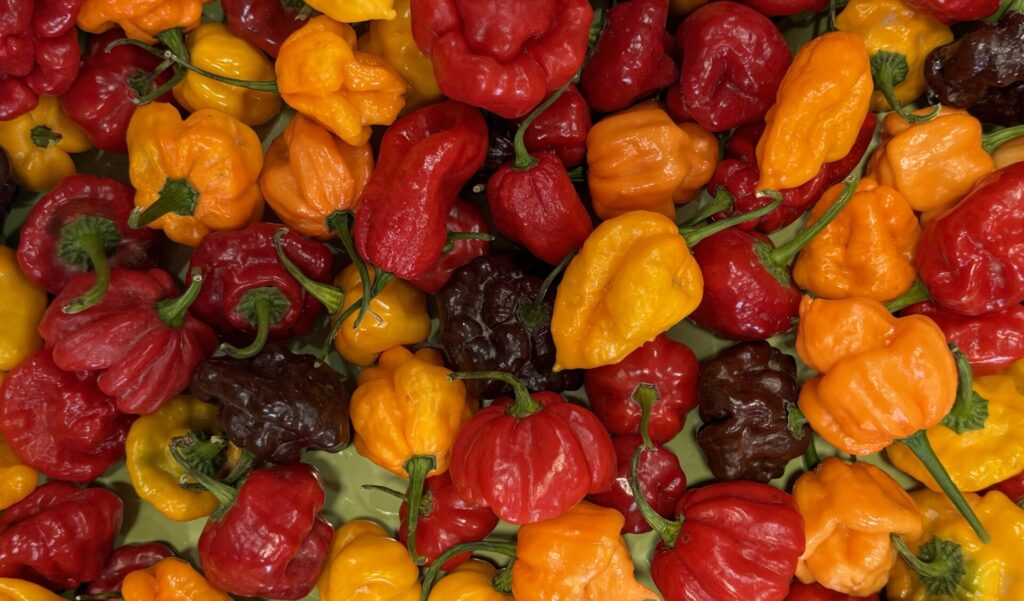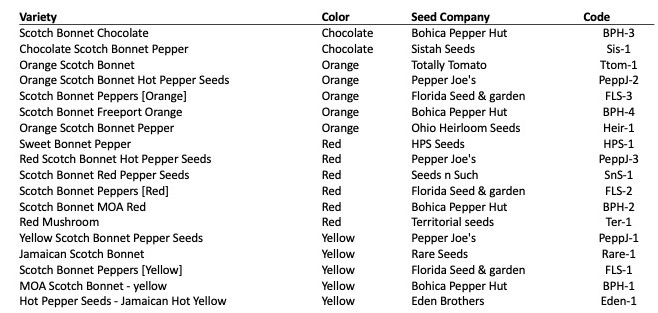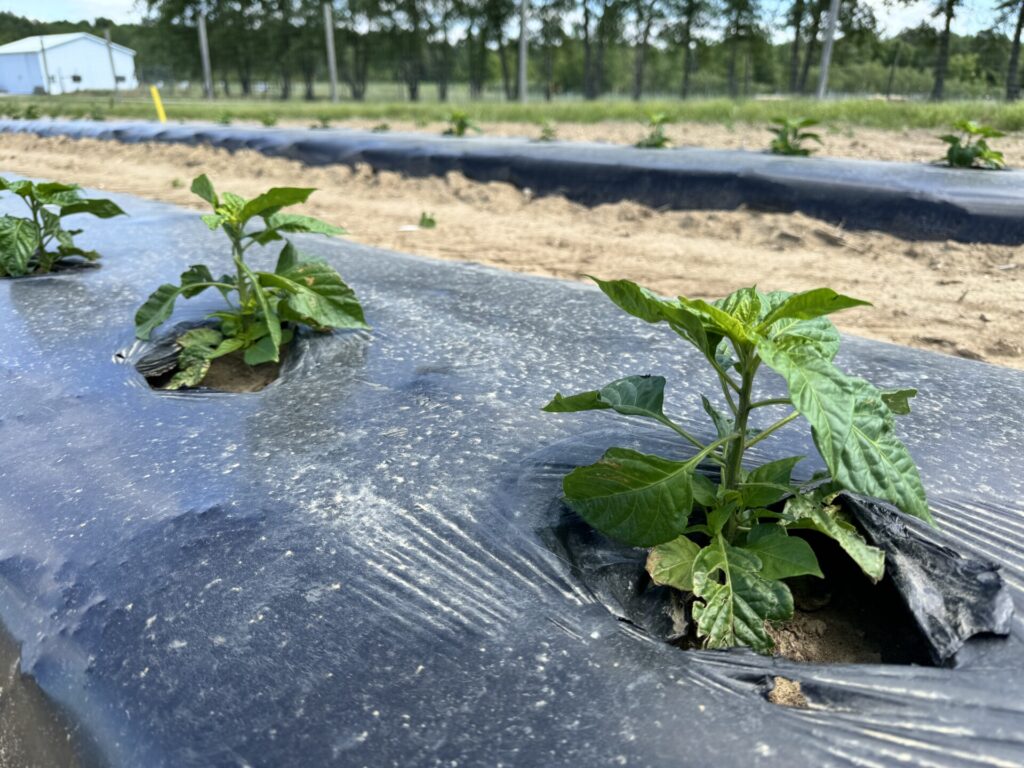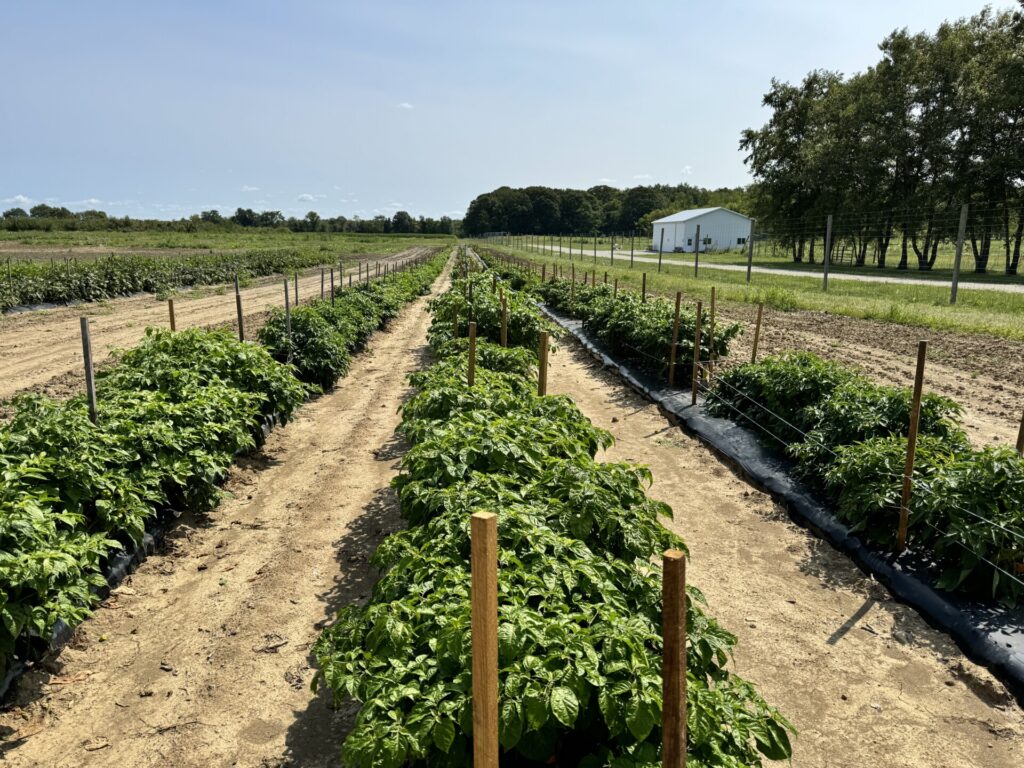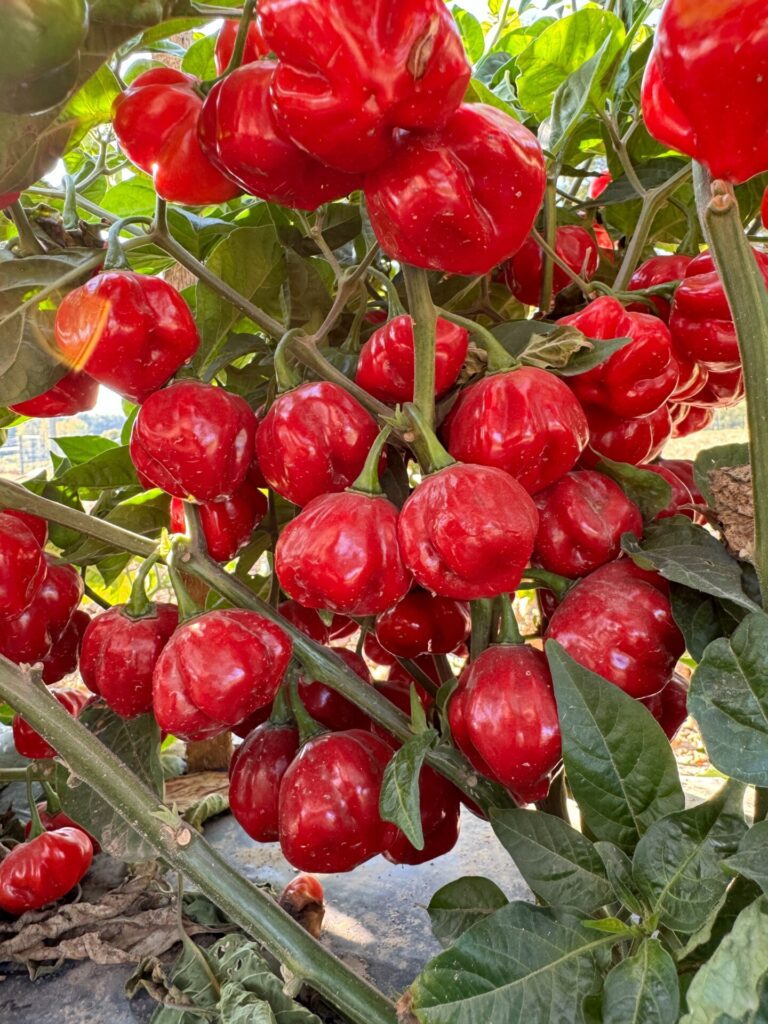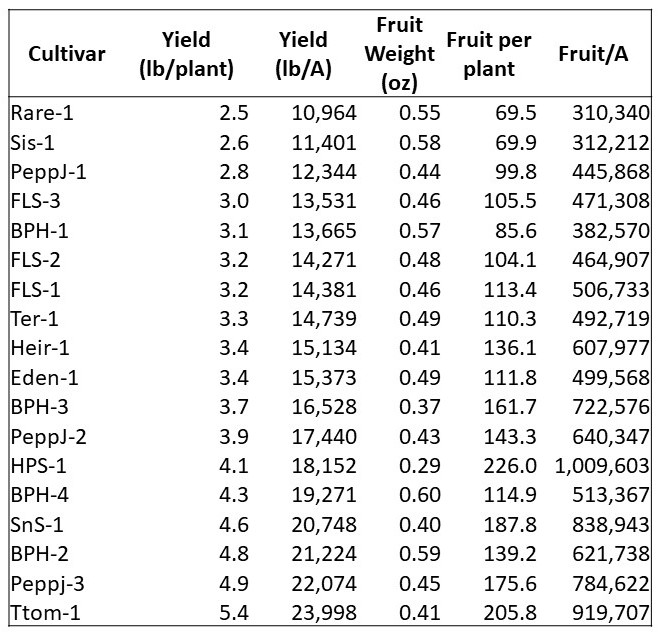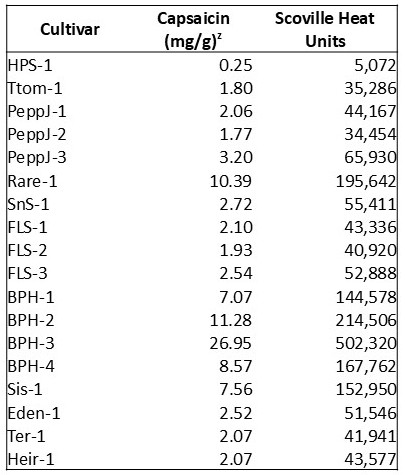After a family vacation to Jamaica in 2023, Dr. Langenhoven at Purdue University recognized the potential for Scotch Bonnet peppers as a high-value specialty crop for diversification on Indiana farms. This led to a 2024 research trial at the Meigs Horticulture Facility (Throckmorton Purdue Ag Center) near Lafayette to evaluate the commercial production potential of this Caribbean staple in our Midwest growing conditions.
Market Analysis
The hot sauce industry continues to show strong growth in the U.S. market, with IBISWorld’s 2024 industry report indicating:
- Current revenue of $2.7 billion
- Projected compound annual growth rate of 2.1%, reaching $3.0 billion by 2029
- Changing consumer preferences driving demand, particularly among younger generations and growing immigrant populations
- Manufacturers focusing on product innovation and brand differentiation
While profit margins average 3.6% and competition from foreign manufacturers presents challenges, the demand for high-quality specialty peppers continues to increase. Caribbean production faces limitations from extreme weather events, high pest and disease pressure, and limited productive land—creating opportunity for Midwest growers.
Crop Overview
Scotch Bonnet peppers (Capsicum chinense) are known for:
- Heat levels between 100,000-350,000 Scoville Heat Units (though our trials found wider variation)
- Distinctive fruity, aromatic flavor profile that sets them apart from other hot peppers
- High nutritional value, including vitamins A and C, magnesium, flavonoids, and folate
- Multiple product possibilities: hot sauce, seasoning blends, pickled peppers, dried pepper mash, dehydrated powders, and pepper paste
Production Trial Results
Our 2024 trial at Meigs Horticulture Facility included 18 different Scotch Bonnet cultivars.
Trial Management:
- Seeded in greenhouse: April 11
- 72 cell plug trays were placed on Redi-Heat HD heat mats at 80◦F to facilitate even and faster germination
- Transplanted to raised beds: May 14
- Plant spacing: 1.5 feet between plants, 6.5 feet between rows (4,468 plants/acre)
- First harvest: September 12 (119 days after transplanting)
- Final harvest: October 3
Crop Management
- Weed control: Pre-plant applications of Liberty (May 8) and Dual Magnum II (May 10)
- Plant support: Wooden stakes and string installed four weeks after transplanting
- Irrigation: Single drip tape per row (Rivulis T-tape 5/8″ with 12-inch emitter spacing, 0.22 GPM/100 ft flow rate)
- Pest management: No insecticide or fungicide applications were necessary due to low pest and disease pressure
Key Observations:
- Initial growth (first four weeks) was slow until temperatures consistently reached the preferred 70-95°F range (approximately 5 weeks after transplanting)
- Minimal disease presence and low insect pressure throughout the growing season
- August-September drought conditions helped maintain fruit quality
- Yields ranged from 11,000 to 24,000 lb/acre
- Individual fruit weight varied between 0.29-0.60 ounces
- Scoville heat units showed significant variation (5,000-500,000 SHU)
- Freeze-dried fruits produced attractive, marketable colored powders
Production Considerations for Indiana Growers
Growing Requirements:
- Well-drained, fertile loam or clay loam soil with pH 6.0-7.5
- Soil temperatures must reach at least 65°F before transplanting
- Optimal growing temperatures: 70-95°F
- Maturity range: 80-120 days, depending on cultivar
- Continued fruit set occurs when temperatures remain favorable
Challenges in Midwest Production:
- Short growing season requires careful timing of transplants
- Early planting is not recommended based on our observations
- Post-harvest handling and processing infrastructure may require investment
Recommendations for Commercial Growers
- Start Small: Begin with a small pilot program to test systems and markets before scaling up
- Timing Matters: Avoid early transplanting; wait until soil and air temperatures are consistently warm
- Market Development: Connect with potential buyers before initiating production
- Direct contracts with hot sauce manufacturers
- Development of local and regional specialty markets
- Cooperative marketing efforts with other specialty crop producers
- Processing Considerations: Research requirements and costs for FDA-approved processing facilities if planning value-added products
- Utilize Available Resources: Consult with Purdue Extension for technical support on production techniques, available commercial kitchens, food safety, and marketing
- Network: Visit successful pepper operations in similar climate zones to gain practical insights
Conclusion
Our preliminary research indicates that Scotch Bonnet peppers show strong potential as a high-value specialty crop for Indiana commercial vegetable operations. While production challenges exist, the expanding market and successful trial results suggest this crop could offer profitable diversification opportunities for Midwest growers. Further research will address remaining questions about our region’s optimal varieties, precise timing, and post-harvest handling. A followup trial is planned for 2025.
Contact Petrus Langenhoven at plangenh@purdue.edu if you have any questions.
Acknowledgements
I want to thank Sofia Catucuamba, visiting research scholar, and the Purdue Student Farm Organization for helping harvest the peppers. I would also like to thank Ximena Yepez and Amanda Deering for their postharvest analysis of pepper color and capsaicin content and the staff of Meigs, Chloe Henscheid, and Wil Browm-Grimm for their support during the production phase of the experiment.
